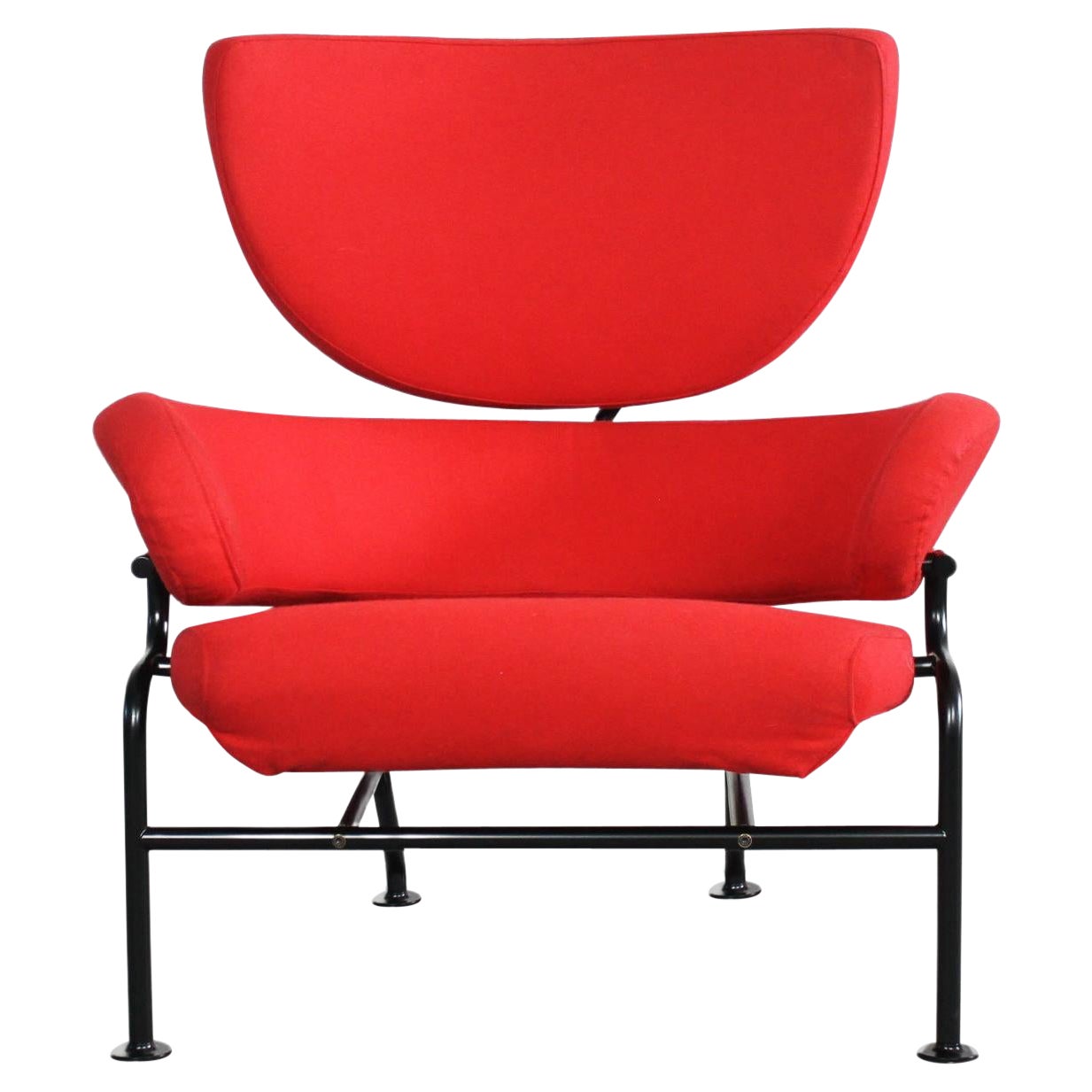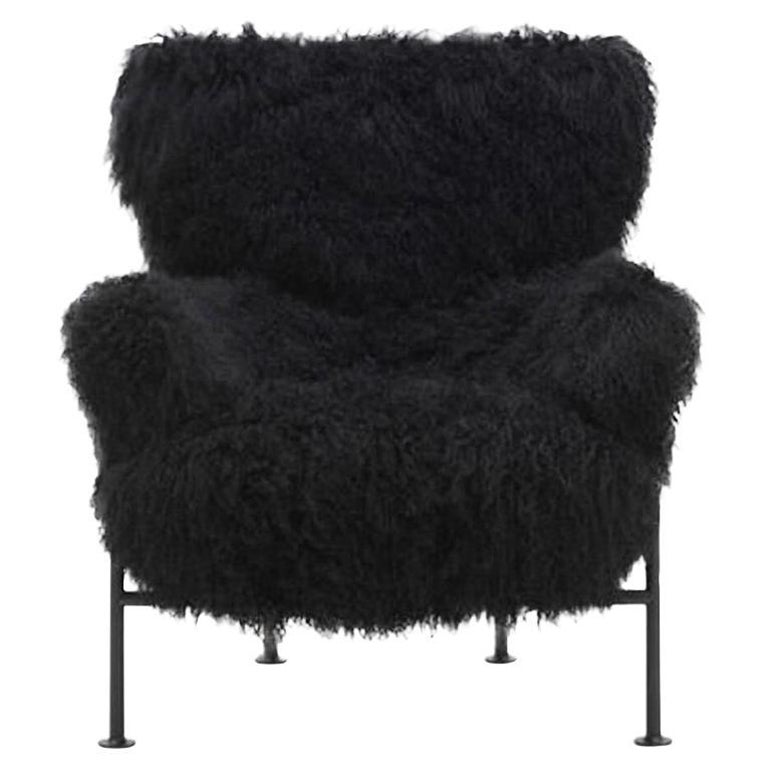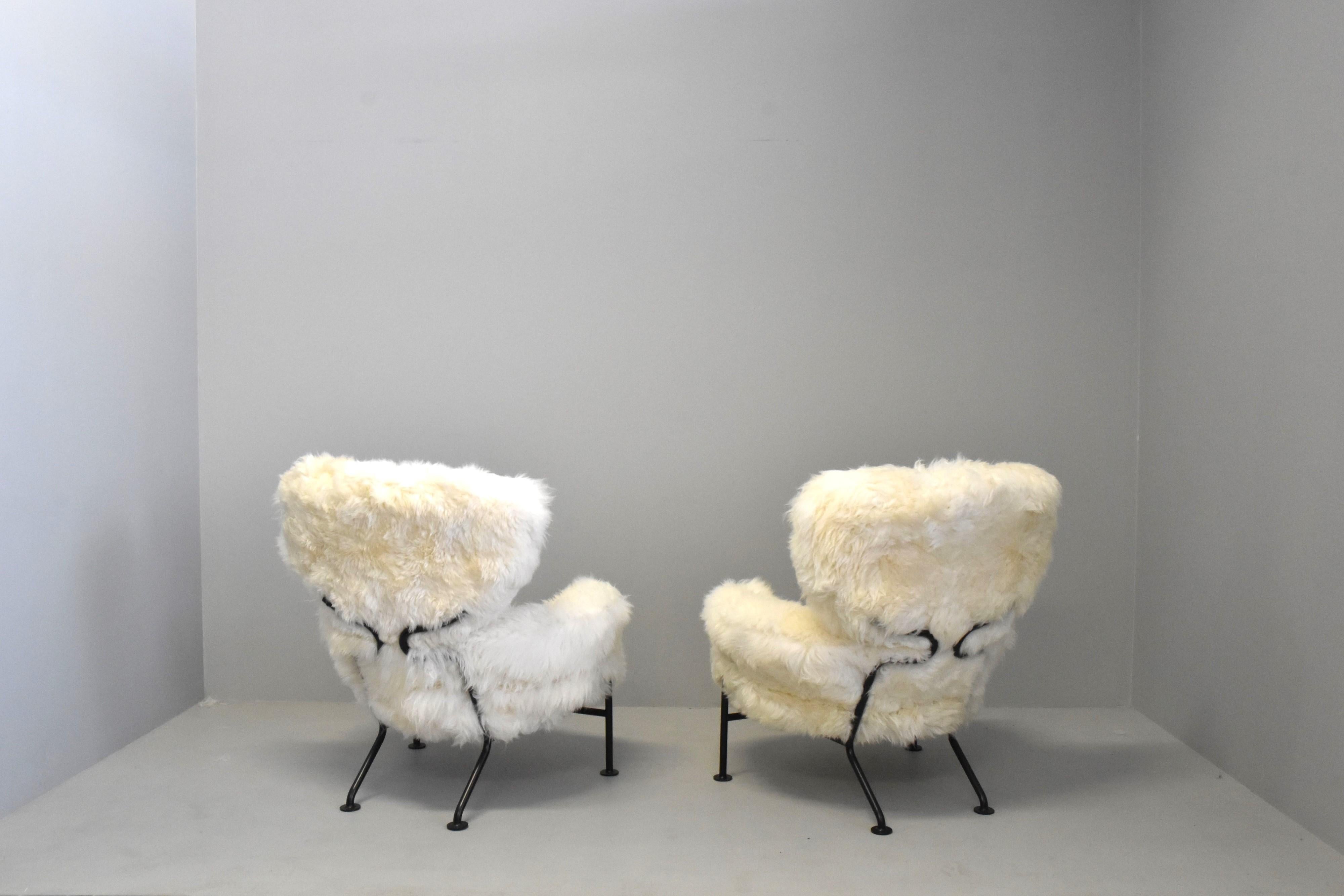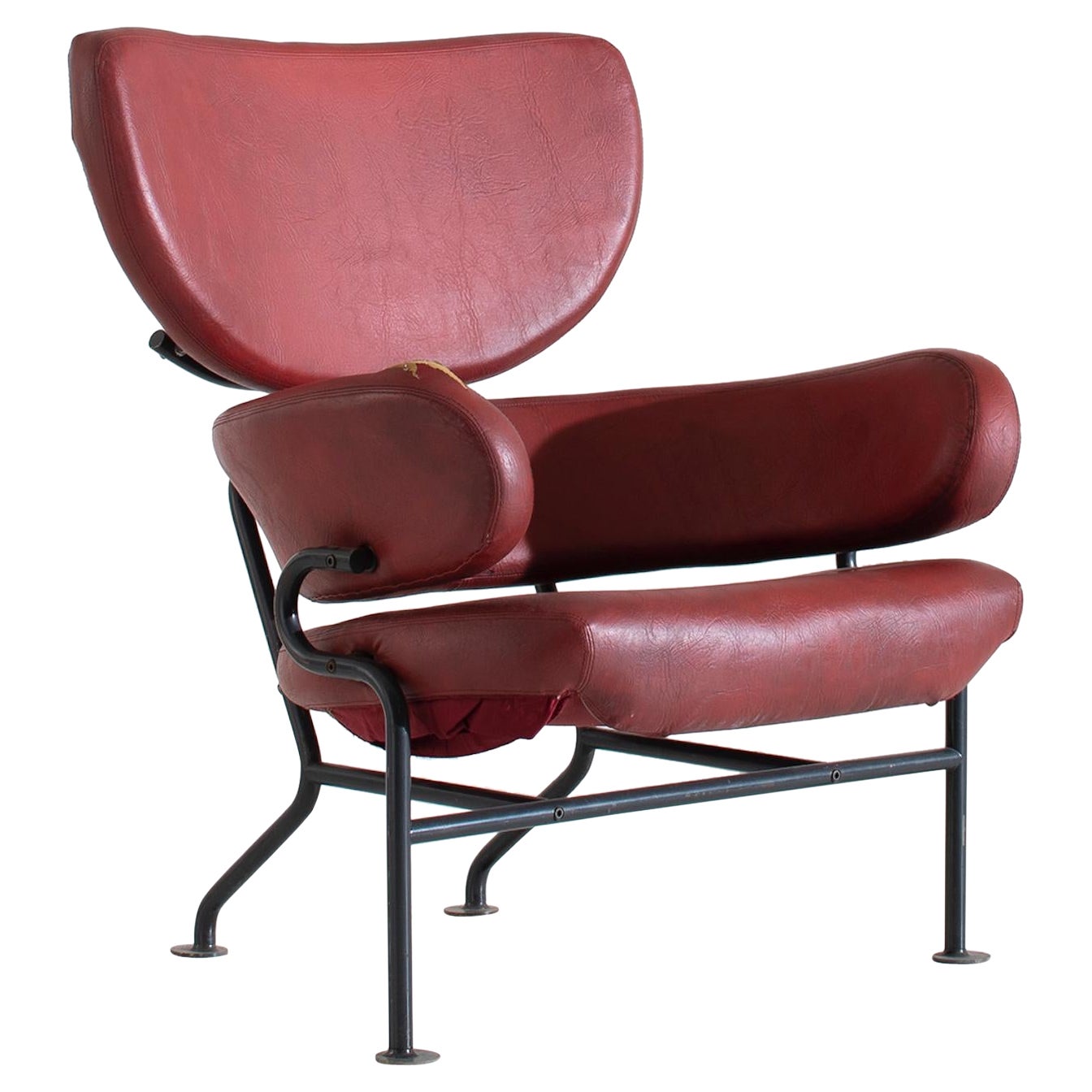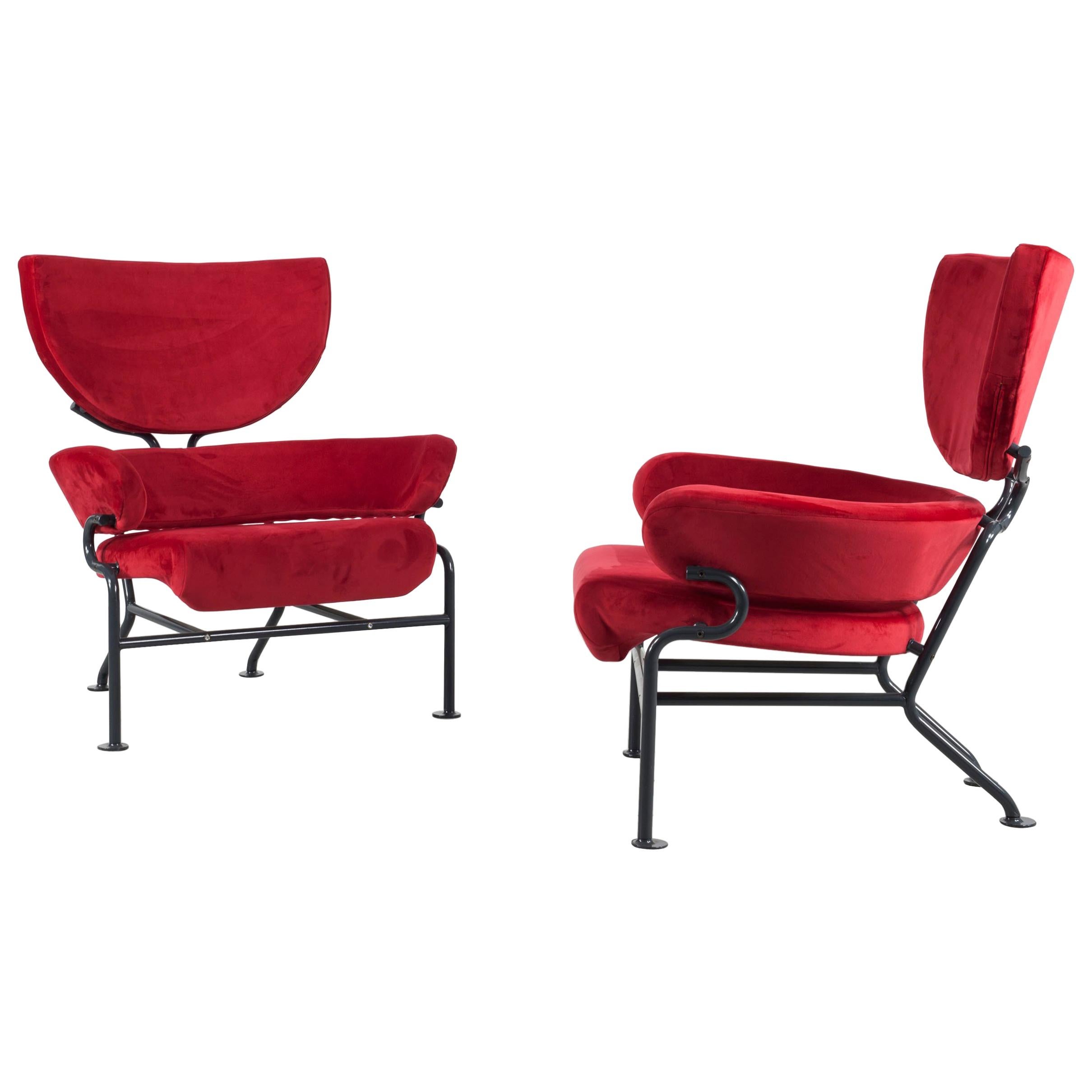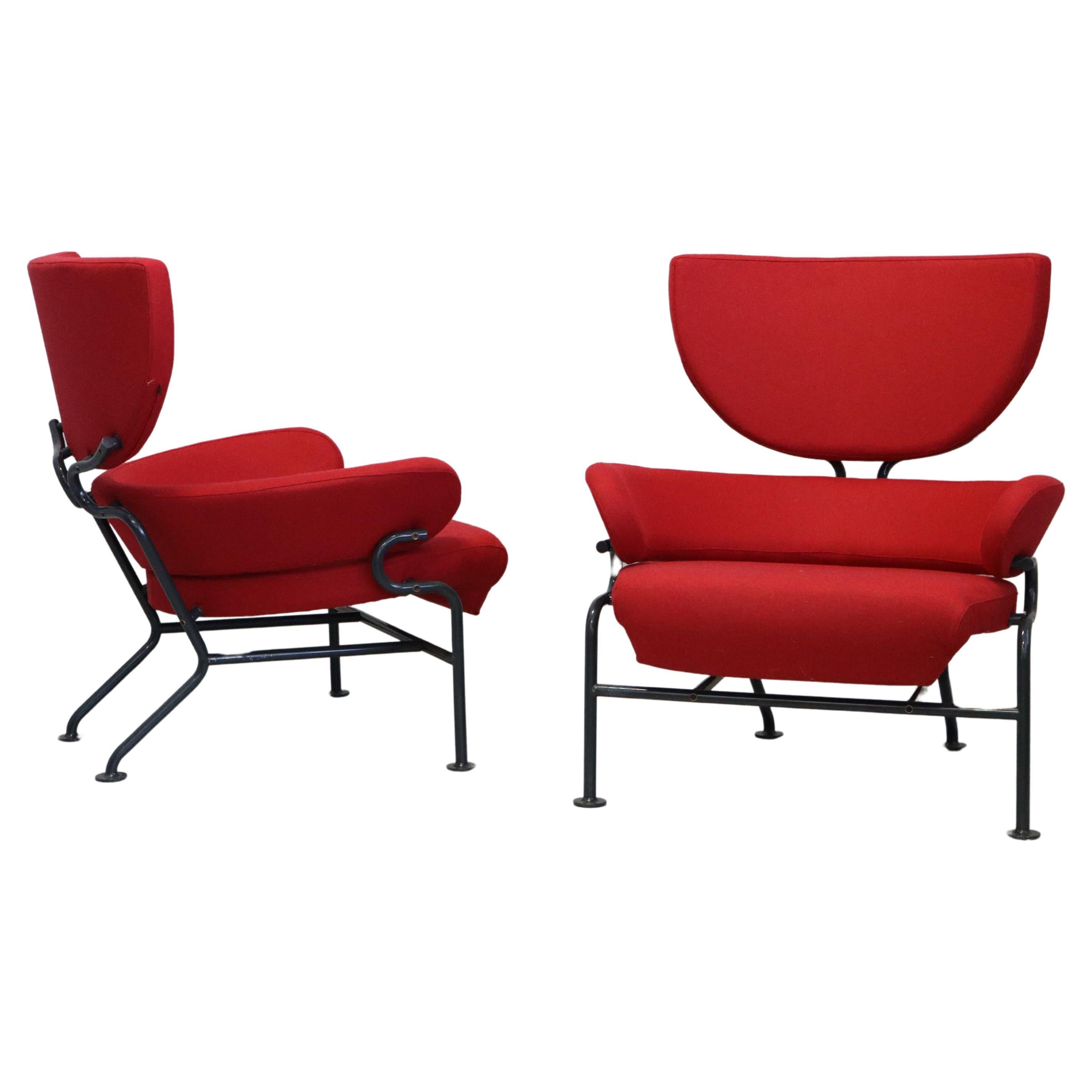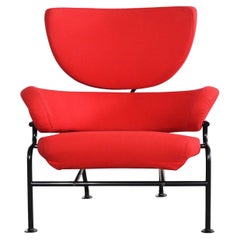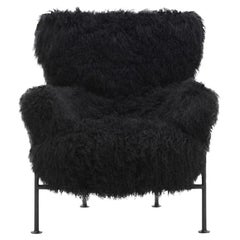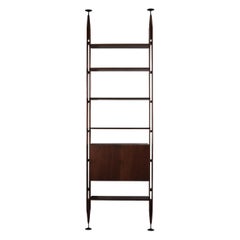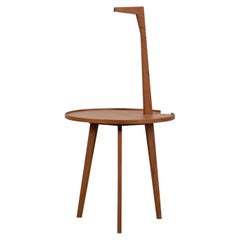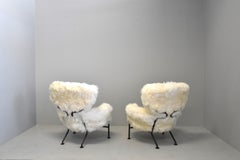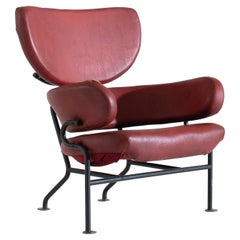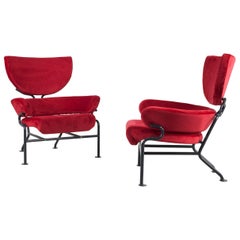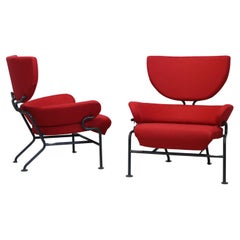Items Similar to Franco Albini PL19 or Tre Pezzi Armchair in White Wool by Poggi Pavia, 1950s
Want more images or videos?
Request additional images or videos from the seller
1 of 15
Franco Albini PL19 or Tre Pezzi Armchair in White Wool by Poggi Pavia, 1950s
About the Item
PL19 also known as Tre Pezzi armchair with black enameled steel tube structure, upholstered in white Mongolian goat wool.
Designed by Franco Albini & Franca Helg for Poggi, Pavia produced since the late 1950s to 1970s.
After spending his childhood and part of his youth in Robbiate in Brianza, where he was born in 1905, Franco Albini moved with his family to Milan. Here he enrolled in the Faculty of Architecture of the Polytechnic and graduated in 1929. He starts his professional activity in the studio of Gio Ponti and Emilio Lancia, with whom he collaborates for three years. He probably had his first international contacts here
In those three years, the works carried out are admittedly of a twentieth-century imprint. It was the meeting with Edoardo Persico that marked a clear turning point towards rationalism and the rapprochement with the group of editors of “Casabella”.
The new phase that that meeting provoked starts with the opening of the first professional studio in via Panizza with Renato Camus and Giancarlo Palanti. The group of architects began to deal with public housing by participating in the competition for the Baracca neighborhood in San Siro in 1932 and then creating the Ifacp neighborhoods: Fabio Filzi (1936/38), Gabriele D’Annunzio and Ettore Ponti (1939).
Also in those years Albini worked on his first villa Pestarini.
But it is above all in the context of the exhibitions that the Milanese master experiments his compromise between that “rigor and poetic fantasy” coining the elements that will be a recurring theme in all the declinations of his work – architecture, interiors, design pieces . The opening in 1933 of the new headquarters of the Triennale in Milan, in the Palazzo dell’Arte, becomes an important opportunity to express the strong innovative character of rationalist thought, a gym in which to freely experiment with new materials and new solutions, but above all a “method”.
Together with Giancarlo Palanti, Albini on the occasion of the V Triennale di Milano sets up the steel structure house, for which he also designs the ‘furniture. At the subsequent Triennale of 1936, marked by the untimely death of Persico, together with a group of young designers gathered by Pagano in the previous edition of 1933, Franco Albini takes care of the preparation of the exhibition of the house, in which the furniture of three types of accommodation. The staging of Stanza per un uomo, at that same Triennale, allows us to understand the acute and ironic approach that is part of Albini, as a man and as a designer: the theme addressed is that of the existenzminimum and the reference of the project is to the fascist myth of the athletic and sporty man, but it is also a way to reflect on low-cost housing, the reduction of surfaces to a minimum and respect for the way of living.
In that same year Albini and Romano designed the Ancient Italian Goldsmith’s Exhibition: vertical uprights, simple linear rods, design the space. A theme, that of the “flagpole”, which seems to be the center of the evolution of his production and creative process. The concept is reworked over time, with the technique of decomposition and recomposition typical of Albinian planning: in the setting up of the Scipio Exhibition and of contemporary drawings (1941) the tapered flagpoles, on which the paintings and display cases are hung, are supported by a grid of steel cables; in the Vanzetti stand (1942) they take on the V shape; in the Olivetti store in Paris (1956) the uprights in polished mahogany support the shelves for displaying typewriters and calculators. The reflection on this theme arises from the desire to interpret the architectural space, to read it through the use of a grid, to introduce the third dimension, the vertical one, while maintaining a sense of lightness and transparency.
The flagpole is found, however, also in areas other than the exhibition ones. In the apartments he designed, it is used as a pivot on which the paintings can be suspended and rotated to allow different points of view, but at the same time as an element capable of dividing spaces. The Veliero bookcase, built in a single prototype in 1940, has two main uprights, made up of slender curved and juxtaposed bars, linked by a complex tensile structure. The lightened upright is also found in the LB7 bookcase, produced by Poggi in the 1950s.
Like the evolution of the upright, also the decomposition and recomposition of the architectural elements and the use of the module, constitute the elements of a method that tends to simplify the complex phenomena of design down to the essential nuclei.
Albini is a complete designer, whose work ranges from construction to design, from installations to urban planning. Among his masterpieces are: the Genoese Museums that change the way the public uses the work of art, the Pirovano Refuge in Cervinia, the Rinascente in Rome and the Milan Metro, which inspires the projects of the New York and Sao Paulo.
Silent, rigorous, ironic man, Albini works incessantly, supported by a moral code that accompanies him throughout his career. He firmly believes in the social role of the architect as a profession at the service of the people. He considers it the very reason for its existence.
- Creator:Poggi (Manufacturer),Franco Albini and Franca Helg (Designer)
- Dimensions:Height: 35.44 in (90 cm)Width: 29.14 in (74 cm)Depth: 25.6 in (65 cm)
- Style:Post-Modern (Of the Period)
- Materials and Techniques:
- Place of Origin:
- Period:
- Date of Manufacture:1950s
- Condition:Reupholstered.
- Seller Location:Montecatini Terme, IT
- Reference Number:1stDibs: LU5304230817462
About the Seller
4.9
Gold Seller
Premium sellers maintaining a 4.3+ rating and 24-hour response times
1stDibs seller since 2020
123 sales on 1stDibs
Typical response time: 1 hour
- ShippingRetrieving quote...Shipping from: Borgo a Buggiano, Italy
- Return Policy
Authenticity Guarantee
In the unlikely event there’s an issue with an item’s authenticity, contact us within 1 year for a full refund. DetailsMoney-Back Guarantee
If your item is not as described, is damaged in transit, or does not arrive, contact us within 7 days for a full refund. Details24-Hour Cancellation
You have a 24-hour grace period in which to reconsider your purchase, with no questions asked.Vetted Professional Sellers
Our world-class sellers must adhere to strict standards for service and quality, maintaining the integrity of our listings.Price-Match Guarantee
If you find that a seller listed the same item for a lower price elsewhere, we’ll match it.Trusted Global Delivery
Our best-in-class carrier network provides specialized shipping options worldwide, including custom delivery.More From This Seller
View AllFranco Albini PL19 or Tre Pezzi Armchair in Red Fabric by Poggi 1970s
By Poggi, Franco Albini and Franca Helg
Located in Montecatini Terme, IT
PL19 or Tre Pezzi armchair with frame in black lacquered tubular steel, seat and back in padded red fabric.
Designed by Franco Albini and Franca Helg in 1959 for the Nuove terme Lui...
Category
Vintage 1970s Italian Mid-Century Modern Armchairs
Materials
Steel
Franco Albini Pl19 or Tre Pezzi Armchair in Black Mongolian Wool for Poggi Italy
By Poggi, Franco Albini and Franca Helg
Located in Montecatini Terme, IT
PL19 also known as Tre Pezzi armchair with black enameled steel tube structure, upholstered in black Mongolian goat wool.
Designed by Franco Albini & Franca Helg for Poggi, Pavia...
Category
Vintage 1950s Italian Other Armchairs
Materials
Steel
$16,608 Sale Price
31% Off
Franco Albini LB7 Bookcase in Teak Wood by Poggi Pavia 1950s Italy
By Poggi, Franco Albini
Located in Montecatini Terme, IT
LB7 bookcase composed of a single module with shelves and a storage unit with two doors, made in veneered solid teak wood, and black lacquered metal details.
Designed by Franco Alb...
Category
Vintage 1950s Italian Mid-Century Modern Bookcases
Materials
Metal
Franco Albini Cicognino Coffee Table in Teak Wood by Poggi Pavia 1970s Italy
By Franco Albini, Poggi
Located in Montecatini Terme, IT
Cicognino coffee table entirely made in teak wood designed by Franco Albini in 1952 and firstly produced by the Italian company, Poggi Pavia from the 1950s.
The Cicognino coffee t...
Category
Vintage 1970s Italian Mid-Century Modern Coffee and Cocktail Tables
Materials
Teak
Franco Albini MB15 Large Sideboard with Four-Doors Panels in Wood by Poggi 1950s
By Poggi, Franco Albini
Located in Montecatini Terme, IT
MB15 large sideboard with four-door panels in wood, designed by Franco Albini in 1956 and produced by Poggi, Pavia.
The MB15 sideboard showcases a clean and solid design characteriz...
Category
Vintage 1950s Italian Mid-Century Modern Sideboards
Materials
Wood
Franco Bettonica P 40 Armchair in Walnut and Fabric by Poltronova 1960s
By Franco Bettonica, Poltronova
Located in Montecatini Terme, IT
P 40 armchair with structure in walnut wood, the seat and back are composed of a removable padded cushion covered with fabric and sustained by a fabric structure directly attached to...
Category
Vintage 1950s Italian Mid-Century Modern Armchairs
Materials
Fabric, Walnut
You May Also Like
Franco Albini PL19 Tre Pezzi Armchair for Poggi Pavia, Italy, 1960s
By Franco Albini
Located in Paris, FR
Armchair designed by Franco Albini (1905-1977) and Franca Helg Model n° PL19, 'Tre pezzi'
Lacquered metal, brass and recently eupholstered in white sheep wool skin.
Early original m...
Category
Mid-20th Century Italian Mid-Century Modern Armchairs
Materials
Metal
Franco Albini Armchair PL19 Tre Pezzi for Poggi Pavia Italy Circa 1959
By Franco Albini
Located in Paris, FR
"Model PL19" chairs or "The Pezzi" , designed by Franco Albini and Franca Helg, manufactured by Poggi Pavia, Italy. The chairs have a lacquered metal frame and are upholstered with ...
Category
Mid-20th Century Italian Mid-Century Modern Armchairs
Materials
Metal
Franco Albini Set of Two "Model PL19", Manufactured by Poggi
By Franco Albini, Poggi
Located in Wolfurt, AT
Set of two "Model PL19" chairs, designed by Franco Albini, manufactured by Poggi Pavia, Italy. The chairs have a lacquered metal frame and are upholstered with red velvet.
Literat...
Category
Vintage 1960s Italian Mid-Century Modern Armchairs
Materials
Metal
Franco Albini PL19 Pair of Three Piece Armchairs for Poggi Pavia Italy Circa 1959
By Franco Albini
Located in Rovereta, Repubblica di San Marino
The "Modello PL19" or "I tre Pezzi" armchairs, designed by Franco Albini and Franca Helg, manufactured by Poggi Pavia, Italy.
The chairs have a lacquered metal frame and are upholste...
Category
Vintage 1950s Italian Mid-Century Modern Armchairs
Materials
Iron
Tre Pezzi Special Edition Armchair by Franco Albini for Cassina
By Cassina, Franco Albini and Franca Helg
Located in Morazzone, Varese
Gorgeous iconic piece of design in a new interpretation of Limited Edition of only 100 pcs.
Designed by Franco Albini together with Franca Helg in 1959, and manufactured by Cassina ...
Category
2010s Italian Mid-Century Modern Armchairs
Materials
Metal
Franco Albini Tre Pezzi Armchair by Cassina
By Cassina, Franco Albini
Located in Barcelona, Barcelona
Armchair designed by Franco Albini in 1959. Relaunched in 2009.
Manufactured by Cassina in Italy.
In 1952, working with Franca Helg, his long-time assistant, Franco Albini designed Tre Pezzi...
Category
2010s Italian Mid-Century Modern Armchairs
Materials
Metal
$8,553 Sale Price / item
27% Off
Recently Viewed
View AllMore Ways To Browse
Enamel Coins
Black Mongolian Fur
Vintage Mongolian Fur
White Goat Fur
Vintage Flagpole
Olivetti Calculator
Typewriter Stand
King Pesce
Kok Maison
Krister Arne Norell
Kurt Ostervig Armchair In Oak And Leather
Laque Martin
Larry Lazlo
Lata Greven
Lawrence Peabody Fiberglass Chairs
Lawrence Peabody Fiberglass
Leather Armchairs By Gote Mobel Sweden
Leo Capote
